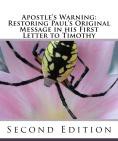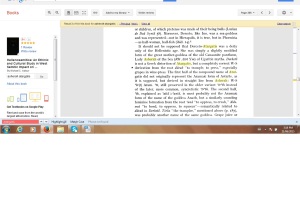A Brief Overview of Paul’s Language and Context in 1st Timothy:
In a brilliant doctoral thesis, Courtney Jade Friesen demonstrates that much of the language found in the Greek Septuagint Bible can also be found in Euripides’ tragic plays. These Greek tragedies were popular at the time the Septuagint was written. In particular, Friesen highlights that ritual violence in a religious context is represented by the same language in both sources (Friesen 2013). In the Septuagint, we find that parents who sacrifice their offspring to the gods and goddesses of Canaan are referred to as “authentas” (Wisdom of Solomon 12:6). In Euripides “Iphigenia in Aulis,” the sacrifice of a child to the goddess Artemis is referred to using the word “authentaisin.”
How does this relate to Biblical Equality? The apostle Paul quotes from the Greek Septuagint frequently. He was evidently very familiar with its language. In 1 Timothy 2:12, he prohibits teaching that is connected with “authentein.” “Authentein” is the infinitive verb form of the nouns “authentas” and “authentaisin” found in the Septuagint and in Euripides’ play.
What is Paul talking about?
It’s important to remember that in his letter to Timothy, Paul is prohibiting the false teaching of asceticism. Teachers in Ephesus were forbidding marriage and the eating of certain foods. Paul refers to this teaching as “demonic” (see 1 Timothy 4:1-5). Paul is encouraging Timothy to guard the gospel against something falsely called knowledge—gnosis in Greek (see 1 Timothy 6:20-21).
St. Basil of Ancyra, a priest who served in Asia Minor in the 4th century A.D., reported that the churches of this region (where Ephesus is located) were filled with eunuchs. Many men had castrated themselves, thinking that renouncing “the body and its passions” was necessary to please God. We read about an early instance of this in a 2nd century work entitled, “the Acts of John.” In this account, a young man from Ephesus castrates himself in a fit of remorse over committing adultery. He is rebuked by John (the Lord’s disciple) who tells him it is not the body that leads to sin, but rather temptation arising from the heart. Though Basil wrote in the 4th century, the problem he was attempting to address had started much earlier (see Daniel F. Caner’s, “The Practice and Prohibition of Self-Castration in Early Christianity”).
In addition to pointing out that ascetics in the church of Asia Minor were castrating themselves, Basil points out why they were doing this. He reports that they were following the example of the priests of Cybele. New priests of the goddess Cybele would offer her their genitals in a bloody ritual that took place once each year. The Greek name for this goddess was Artemis (see Philippe Borgeaud’s “Mother of the Gods”).
During the first century, when Paul wrote his letter to Timothy, Roman law viewed depriving a man of his offspring via castration as a form of murder. To practice castration in religious ritual was viewed as sacrificing one’s offspring to the deity (see Lex Cornelia de sicariis et veneficis).
And so, in 1st Timothy 2, when Paul tells the church to live at peace with the Roman authorities (verses 1 & 2), tells men not to be angry (verse 8), and tells women not to teach or “authentein” a man (verse 12), I believe he is prohibiting the false teaching of extreme asceticism that was associated with the ritual castration of men (see “Apostle’s Warning”).
I believe it is also important to recognize that offerings made to Artemis/Cybele were meant to appease the goddess so that she might “save” women in childbearing (see 1 Timothy 2:15). Rather than looking to the goddess, Paul encourages women to seek salvation in Christ, through faith and holiness. Artemis/Cybele mythology also taught that life and purity came from women, while evil came from men, especially from male sexuality. Early ascetic movements in the church that borrowed from this mythology claimed that it was good for Eve to eat from the tree of knowledge (gnosis), and that all life came from the womb of a virgin mother (see the doctrines of the Ophites, who called themselves “Gnostics”). Paul reminds the Ephesians that a man (Adam) was also a source of life, and that it was wrong for Eve to eat from the forbidden tree (see 1 Timothy 2:13-14).
*I recognize that many attempts have been made to understand the difficult portions of 1st Timothy. My intention is not to dismiss any other evidence-based views, but rather to add information to an important conversation that has a direct impact on how women experience themselves, God and the Christian faith. I hope that the information is helpful.


